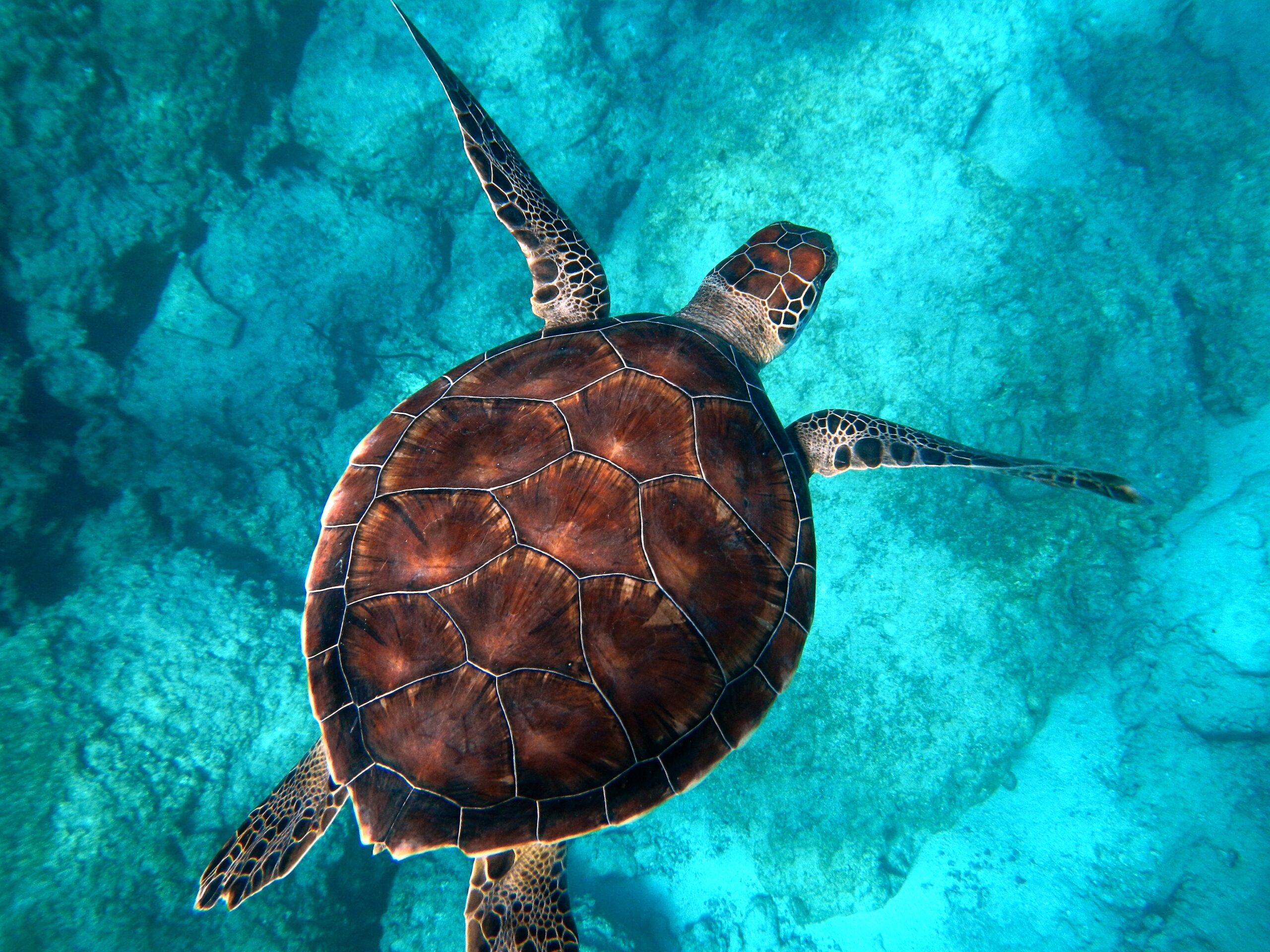
Wild sea turtles were declining rapidly when Cayman Turtle Farm Ltd. was created in the West Indies in 1968. The farm, located on Grand Cayman Island, hatched green sea turtles in captivity and raised them for meat. By selling these turtles, it reduced the incentive of poachers to take endangered wild turtles. The farm also released year-old hatchlings into the ocean and supported turtle research.
The farm quickly gained fame as an example of “enviro-capitalism”—entrepreneurial protection of the environment (Anderson and Leal 1997). “The net contribution to the survival of the green turtle has been enormous,” wrote R. J. Smith (1988).
Founded by the British businessman Antony Fisher (later Sir Antony), Irvin Naylor, a Pennsylvania businessman, and others, the Cayman Turtle Farm operated as a for-profit company until 1983. It never made the profits originally envisioned, however, largely because of regulatory restrictions fueled by environmentalists who distrusted farming. Eventually, the Caymanian government took it over.
Today, the farm has bounced back. With the opening of a new $150 million facility to draw tourists from Cayman’s growing cruise ship business, the farm has created a domestic market for sea turtles that promises to fund conservation work in the future. Still owned by the government, the farm has again turned to the market as a tool to protect turtles.
Turtles and Cayman
Columbus discovered the Cayman Islands in 1503 on his final voyage to the Americas and named the turtle-covered islands “Las Tortugas,” or the Turtles. (The name was later changed to Cayman, based on a Carib Indian word for crocodiles.) The first European visitors came to Cayman to hunt turtles for trans-Atlantic ships, whose crews kept the turtles alive on-board until they were needed for food. Once Cayman was permanently settled in the 1700s, locals quickly took up turtling for their own consumption as well as for sale to passing ships.
This history makes the turtles an important part of Caymanian culture. As my guide Darney Fellner told me during a recent tour, his forefathers have been turtle men as far back as he knows. While many Caribbean cuisines include turtle meat, it is an integral part of Caymanian cuisine, which recognizes seven distinct cuts of turtle meat and a variety of preparation methods.
As elsewhere in the world, sea turtles are overharvested. Unowned, they are subject to the tragedy of the commons. A variety of laws have been enacted to limit turtling, but poaching continues.
Sea turtles are particularly vulnerable because their eggs are laid on the beach. Once a year, some females come ashore to lay eggs in the sand, making between five and seven nests per season and laying between 100 and 180 eggs per nest. After burying the eggs in the sand, the mothers return to the sea—perhaps for years. When the young turtles hatch 60 days later, they dig their way to the surface, where they are easy prey for predators—avian, marine, and human—as they make their way to the water. Although natural hazards are severe, human intervention can worsen the odds. Lights from beachfront developments disorient young turtles, fishing and shrimping nets can drown them, and plastic debris that the turtles mistakenly eat can kill them. According to the Carribean Conservation Corporation (2006), “only an estimated one in 1,000 to 10,000 will survive to adulthood.”
A Private Beginning
Mariculture Ltd., the original name of the farm, started with a stock of eggs collected from nests below the water line and on eroded beaches, eggs that had little chance of successful hatching or of turtle survival.1 The founders hired former turtle poachers and set about learning how to raise the turtles in captivity. Using revenues from turtle product sales at home and abroad, the company funded research on sea turtles and released thousands of year-old turtles into the sea. By employing former poachers, the company both reduced the danger to turtles in the wild and allowed a number of Caymanian turtlers to continue working in the industry that had deï¬ned island life for hundreds of years.
In the mid-1970s, the United States listed the green sea turtle as endangered under the Endangered Species Act. This closed off U.S. markets and ended the farm’s ability to ship through U.S. ports and airports. Then in 1979 the Convention on International Trade in Endangered Species (CITES) changed the interpretation of its exemption of “bred in captivity” animals. This excluded the first generation of turtles born in captivity (because they may have come from eggs laid by wild turtles). This happened just as the farm announced that its captive breeding program had successfully produced its first generation of turtles. As the then-CEO of Cayman Turtle Farm explained in 1980, the convention’s language exempting animals “bred in captivity for commercial purposes” was repeatedly reinterpreted by opponents of the farm to stop the farm’s sale of turtle products (Johnson 1980). This led additional countries to close their markets. With the loss of its international markets, the company’s economic model collapsed.
A Unique Setting
In 1983, the Caymanian government stepped in to save the farm. It purchased the company and has since operated it as a government-owned corporation. For many years the farm primarily supplied meat to the local market. This limited the company’s profits and reduced the funds available for funding research and release programs. Even so, the farm released over 28,000 turtles into the waters surrounding the Cayman Islands (Cayman Turtle Farm 2006).
Government ownership of resources is often problematic. Without a real owner responsible for profits or losses, there are few incentives for careful husbandry or innovative programs. But the Cayman Islands are known for a vibrant financial sector. Cayman is the fifth largest financial center in the world, home to more than 500 banks, thousands of corporations, insurance companies, and hedge funds. The financial sector makes an important contribution to the islands’ high standard of living. Cayman is ranked eleventh worldwide in GDP per capita, an astounding achievement for a tiny nation with no natural resources.
Cayman’s success in the financial sector helps explain how the turtle farm has prospered even though it is now publicly owned. Not only does the financial sector require a stable, well-run government, but the country itself is constantly engaged in an entrepreneurial struggle for financial business with both large countries and other offshore jurisdictions (Johnson 2001). The government’s entrepreneurial efforts to boost the financial sector and its extensive experience with business undoubtedly contribute to the success in creating a publicly owned vehicle for the turtle farm that both protects the farm from politics and encourages the farm’s efforts to expand its business model.
Turtles and Tourists
Unable to ship turtle products to consumers outside the Cayman Islands, the farm reinvented its business model to focus on the tourist trade. More than 2 million tourists visit Cayman annually, including more than 1.5 million cruise ship passengers. Although the farm has long offered tours, its early offerings were rudimentary—primarily an opportunity to see concrete tanks of turtles, to hold a young turtle, and visit a small gift shop that sold clothing with turtle designs and souvenirs. Since visitors could not take turtle products home, the shop could not sell actual turtle products to most shoppers. On my earliest visit, in 1998, I left disheartened at the shrunken state of a once vibrant business that had the potential to reinvigorate the sea turtle population. But the new $150 million facility makes the farm much more attractive to tourists. The farm today has more than 11,000 turtles and 400 breeders. This is down from the 16,000 turtles before Hurricane Michelle in 2001 (which washed many turtles out to sea, including 70 percent of the farm’s breeders), but the farm is rebounding from those losses.
Visitors can now see turtles swimming in a much larger artificial lagoon, watch them lay eggs and see the eggs hatch on the lagoon’s beach (during the appropriate seasons), visit an aviary of Caribbean birds, snorkel in both fresh water and salt water pools with hundreds of varieties of fish, and view marine predators such as various sharks. The new facility also includes a cafeteria and a new, expanded gift shop, although the international bans on turtle products continue to restrict the shop’s offerings. If successful, these new attractions will boost the farm’s profits and allow it to expand its research and release programs. The farm already has a partnership with St. Matthew’s University Veterinary School, running programs to raise awareness about the problems of beach lights during hatching season and providing meat and other turtle products for the Caymanian market.
Lessons Learned
The ongoing story of the Cayman Turtle Farm has several important lessons for environmental protection efforts around the world. The early experience under private ownership demonstrated how creating a market for products from a species can enhance the species’ chances for survival. The collapse of that market following the ESA and CITES listings showed how even well-intentioned government solutions can lead to less environmental protection rather than more.
The integral role of sea turtles in Caymanian culture also offers another important part of the story. We regularly hear complaints that global markets reduce cultural diversity. But by providing turtle products for the local market and keeping Caymanians employed in the turtle industry, the farm is helping preserve a unique aspect of Caymanian culture.
Cayman Turtle Farm’s recent revitalization gives hope that you can’t keep a good market down. By creating a method for tourists to enjoy sea turtles on the island, the farm found a way around the roadblocks to commercialization created by international and American regulators.
Unfortunately, the new market is not a complete substitute for the old market. When turtle meat and other products could be marketed internationally, the farm was able to produce a wider range of turtle products for sale. Sea turtle shells, for example, can be made into many decorative items, but most of the shells from harvested turtles now have no market and are simply wasted. Turtle oil, from the fat, was once widely used in the cosmetics industry but can no longer be sold internationally.
Cayman Turtle Farm Ltd. deserves praise for its entrepreneurial efforts. However, its success cannot distract us from the devastating impact of American and international regulators’ unwillingness to accept a role for markets in preserving endangered species.
Note
1. For an in-depth discussion of the turtle farm’s history, see Fosdick and Fosdick (1994).
References
Anderson, Terry L., and Donald R. Leal. 1997. Enviro-Capitalists: Doing Good While Doing Well. Lanham, MD: Rowman and Littlefield.
Carribean Conservation Corporation and Sea Turtle Survival League. 2006. Sea Turtle Threats and Conservation. Online: www.cccturtle.org/threats.htm.
Cayman Turtle Farm. 2006. Release Program. Online: www.turtle.ky/release.htm. Fosdick, Peggy, and Sam Fosdick. 1994. Last Chance Lost? York, PA: Irvin S. Naylor.
Johnson, Sir Vassel. 2001. As I See It: How Cayman Became a Leading Financial Centre. London: Book Guild.
Johnson, W.A. 1980. Cayman Turtle Farm, Ltd.: The Crock of Gold, British Herpetological Society Bulletin No. 2. Online: www.turtle.ky/scientiï¬c/crock.htm.
Smith, R. J. 1988. Private Solutions to Conservation Problems. In The Theory of Market Failure, ed. Tyler Cowen. Fairfax, VA: George Mason University Press.



